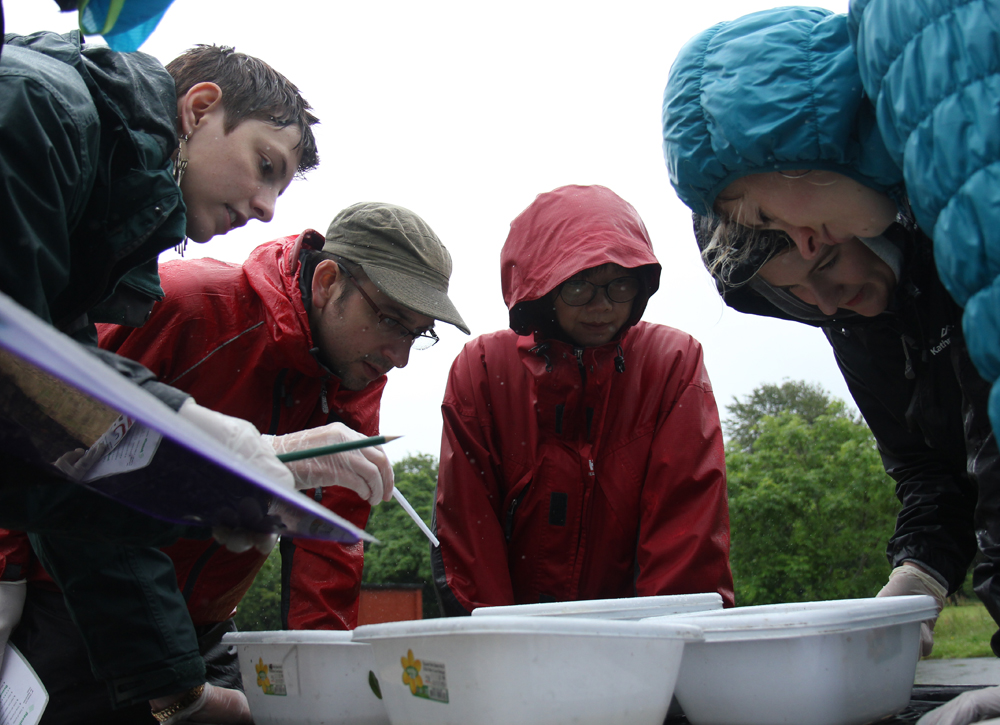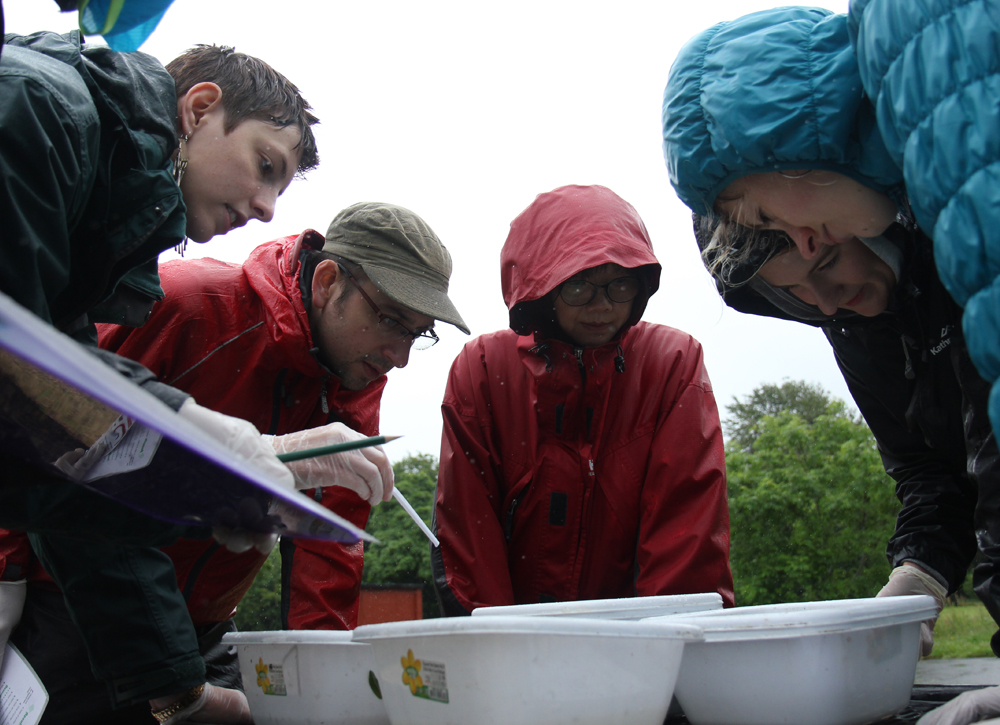I invited community scientist, Jo Dempster, to write a post to explain the OPAL water surveys we carried out on the Submerge workshops in more detail…
OPAL had a fantastic few days out and about with resident Cryptic artist Kathy Hinde. We visited three sites in total running the OPAL water survey at each location. Participants were asked to test the water using three simple techniques, finding out about the water clarity using an “opalometer”, testing for the acidity of the water with pH strips and finally surveying the variety of different pond invertebrates that inhabit the test site to determine a water health score based on the biodiversity in the pond. The information we collected can be seen in full here, and will contribute not only towards the installation Kathy will be putting together for the Sonica festival, but also help scientists to find out more about the health of the UK’s natural environment.
The three tests that participants carried out are as follows:
Water clarity
The first test we carry out is to do with how much light can get through the water, or in other words how clear the water is. In every healthy environment you would expect to find a food web and the pond is no exception. The first stage of all food webs is a plant or producer. Plants need sunlight to be able to photosynthesis and so it is important that sunlight can penetrate the water to allow them to grow. Therefore if the water is very clear this will allow more plants to flourish. Plants add oxygen into the water, provide food for other animals in the pond and can even filter out pollutants. In most cases clear water leads to more plants and more plants lead to healthier ponds!
Water pH
The second test that we carry out has to do with the acidity or alkalinity of the water. Distilled water has a pH value of 7, this is neutral, neither acidic or alkali, with 0 being the most acidic and 14 being the most alkali on the pH scale. Natural rain water is slightly acidic around 5.5, and we would hope that pond water would be somewhere between 6 and 8 for a healthy pond. Outside this range the pond becomes inhospitable for many creatures living there. High acidity (a decrease in pH) is likely to be caused by excess carbon dioxide (CO2) in the water. As aquatic animals breathe out they add CO2 to the water and this causes a decrease in the pH of the water. In a healthy system this is balanced out by the plants in the pond removing the CO2 and “breathing out” oxygen, so in a healthy pond this balance is maintained so that the water pH stays around neutral.
Water health score
The final test that OPAL run on ponds is to do with the various invertebrates that inhabit it. Several of these invertebrates act as bio-indicators, telling us something about the health of the system either by their presence or absence. Each bio-indicator is assigned a health score based on how healthy a water system it requires. For example, most ponds will play host to a variety of worm like animals, from leaches to midge larvae. These animals do not need a clean environment to survive, if these are present 1 point is added to the pond health score. Moving up the scale, many ponds will also have animals like water boatmen; these long-limbed water bugs add 5 points to the health score of any pond they are found in, and whilst they don’t need a pristine environment to live in they need it to be of a reasonable quality. Finally there are some aquatic invertebrates that are bio-indicators of excellent water quality. Animals like the Cased caddisfly larvae, which builds a case out of objects in it’s environment, can only survive in a very healthy water system. If one of these is found in the pond that is being surveyed it adds a whopping 10 points to the pond health score. If a pond fails to surpass 5 points following this test then it is a real cause for concern, ponds that reach the dizzy heights of 31 points or above however are fantastic environments and a real goldmine for biodiversity.

